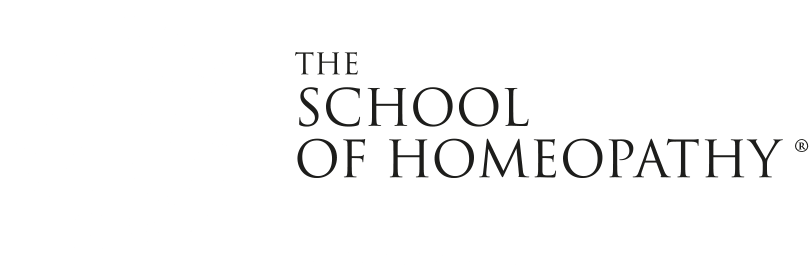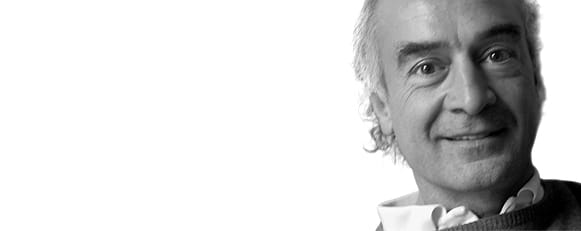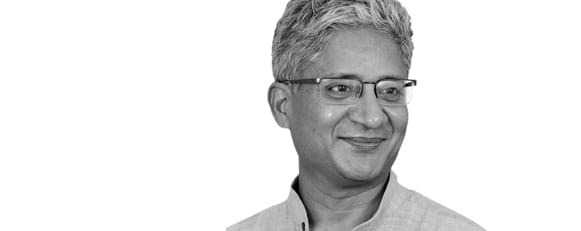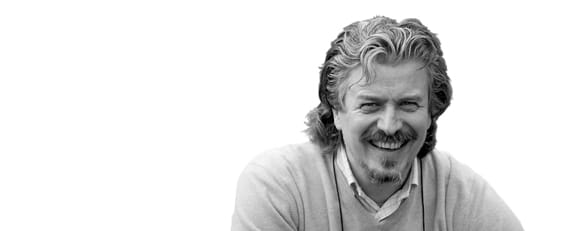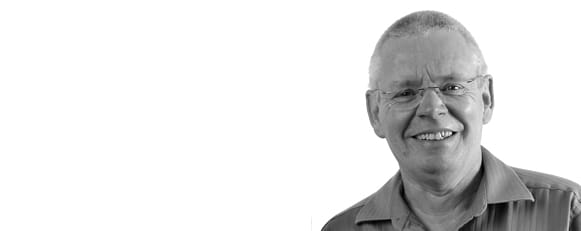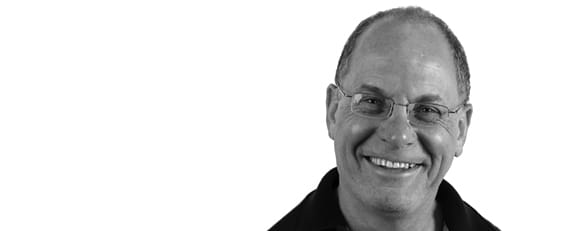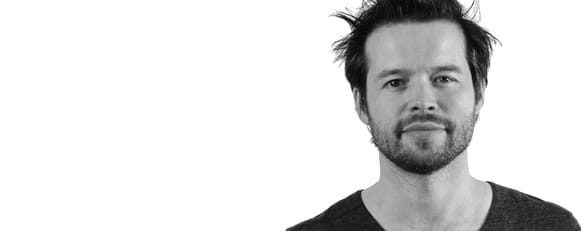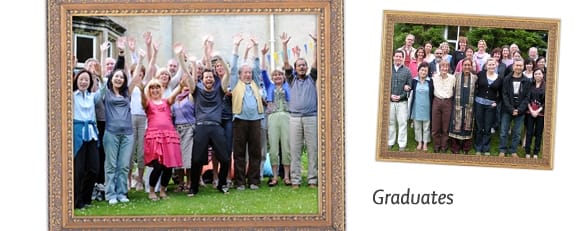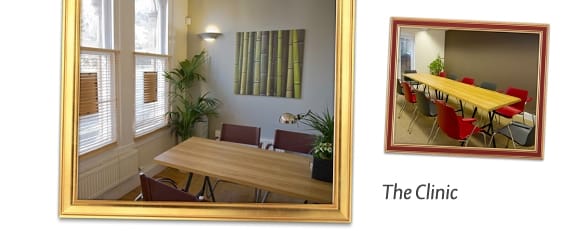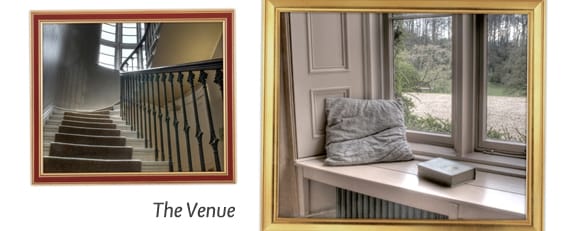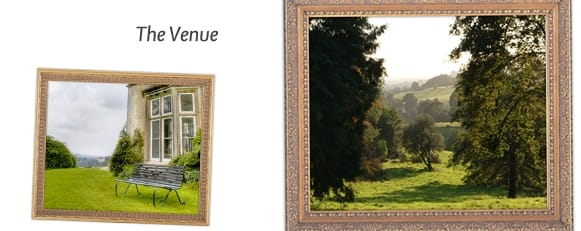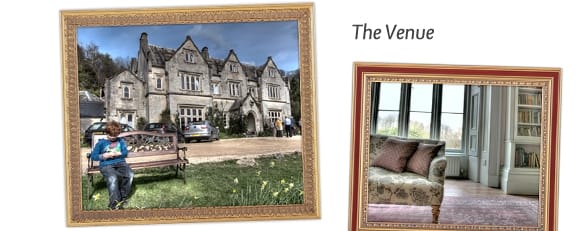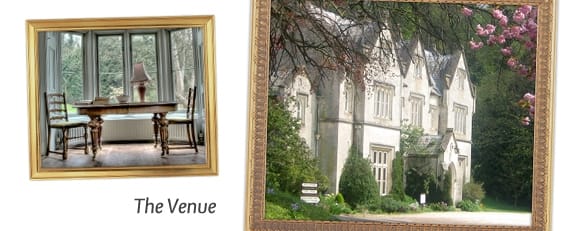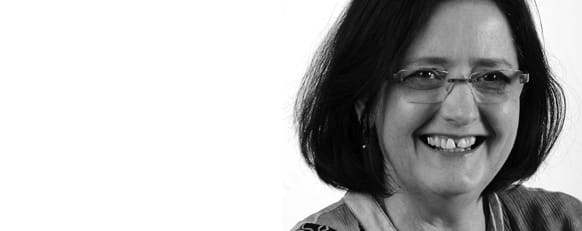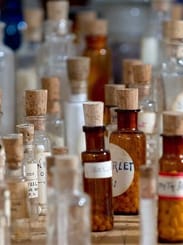
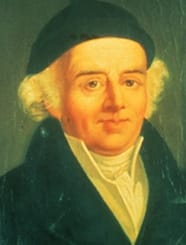
Introduction
Review of the therapeutics, allopathy and palliative treatment that have hitherto been practiced in the old school of medicine.
As long as men have existed they have been liable, individually or collectively, to diseases from physical or moral causes. In a rude state of nature but few remedial agents were required, as the simple mode of living admitted of but few diseases; with the civilization of mankind in the state, on the contrary, the occasions of diseases and the necessity for medical aid increased, in equal proportion. But ever since that time (soon after Hippocrates, therefore, for 2500 years) men have occupied themselves with the treatment of the ever increasing multiplicity of diseases, who, led astray by their vanity, sought by reasoning and guessing to excogitate the mode of furnishing this aid. Innumerable and dissimilar ideas respecting the nature of diseases and their remedies sprang from so many dissimilar brains, and the theoretical views these gave rise to the so-called systems, each of which was at variance with the rest and self-contradictory. Each of these subtile expositions at first threw the readers into stupefied amazement at the incomprehensible wisdom contained in it, and attracted to the system-monger a number of followers, who re-echoed his unnatural sophistry, to none of whom, however, was it of the slightest use in enabling them to cure better, until a new system, often diametrically opposed to the first, thrust that aside, and in its turn gained a short-lived renown. None of them, however. was in consonance with nature and experience; they were mere theoretical webs, woven by cunning intellects out of pretended consequences, which could not be made use of in practice, in the treatment at the sick-bed, on account of their excessive subtilty and repugnance to nature, and only served for empty disputations.
Simultaneously, but quite independent of all these theories, there sprung up a mode of treatment with mixtures of unknown medicinal substances for forms of disease arbitrarily set up, and directed towards some material object completely at variance with nature and experience, hence, as may be supposed, with a bad result – such is old medicine, allopathy as it is termed.
Without disparaging the services which many physicians have rendered to the sciences auxiliary to medicine, to natural philosophy and chemistry, to natural history in its various branches, and to that of man in particular, to anthropology, physiology and anatomy, etc., I shall occupy myself here with the practical part of medicine only, with the healing art itself, in order to show how it is that diseases have hitherto been so imperfectly treated. Far beneath my notice is that mechanical routine of treating precious human life according to the prescription manuals, the continual publication of which shows, alas! how frequently they are still used. I pass it by unnoticed, as a despicable practice of the lowest class of ordinary practitioners. I speak merely of the medical art as hitherto practiced, which, pluming itself on its antiquity, imagines itself to possess a scientific character.
The partisans of the old school of medicine flattered themselves that they could justly claim for it alone the title of ‘rational medicine’, because they alone sought for and strove to remove the cause of disease, and followed the method employed by nature in diseases.
Tolle causam! they cried incessantly. But they went no further than this empty exclamation. They only fancied that they could discover the cause of disease; they did not discover it, however, as it is not perceptible and not discoverable. For as far the greatest number of diseases are of dynamic (spiritual) origin and dynamic (spiritual) nature, their cause is therefore not perceptible to the senses; so they exerted themselves to imagine one, and from a survey of the parts of the normal, inanimate human body (anatomy), compared with the visible changes of the same internal parts in persons who had died of diseases (pathological anatomy), as also from what they could deduce from a comparison of the phenomena and functions in healthy life (physiology) with their endless alterations in the innumerable morbid states (pathology, semeiotics), to draw conclusions relative to the invisible process whereby the changes which take place in the inwardbeing of man in diseases are affected – a dim picture of the imagination, which theoretical medicine regarded as its prima causa morbi;1 and thus it was at one and the same time the proximate cause of the disease, and the internal essence of the disease, the disease itself – although, as sound human reason teaches us, the cause of a thing or of an event, can never be at the same time the thing or the event itself. How could they then, without deceiving themselves, consider this imperceptible internal essence as the object to be treated, and prescribe for it medicines whose curative powers were likewise generally unknown to them, and even give several such unknown medicines mixed together in what are termed prescriptions?
1. It would have been much more consonant with sound human reason and with the nature of things, had they, in order to be able to cure a disease, regarded the originating cause as the causa morbi, and endeavored to discover that, and thus been enabled successfully to employ the mode of treatment which had shown itself useful in maladies having the same exciting cause, in those also of a similar origin, as, for example, the same mercury is efficacious in an ulcer of the glans after impure coitus, as in all previous venereal chancres – if, I say, they had discovered the exciting cause of all other (non-venereal) chronic diseases to be an infection at one period or another with the itch miasm (psora), and had found for all these a common method of treatment, regard being had for the peculiarities of each individual case, whereby all and each of these chronic diseases might have been cured, then might they with justice have boasted that in the treatment of chronic diseases they had in view the only available and useful causa morborum chronicorum (non venereorum), and with this as a basis they might have treated such diseases with the best results. But during these many centuries they were unable to cure the millions of chronic diseases, because they knew not their origin in the psoric miasm (which was first discovered and afterwards provided with a suitable plan of treatment byhomoeopathy), and yet they vaunted that they alone kept in view the prima causa of these diseases in their treatment, and that they alone treated rationally, although they had not the slightest conception of the only useful knowledge of their psoric origin and consequently they bungled the treatment of all chronic diseases!
But this sublime problem, the discovery, namely, a priori, of an internal invisible cause of disease, resolved itself, at least with the more astute physicians of the old school, into a search, under the guidance of the symptoms it is true, for what might be supposed to be the probable general character of the case of disease before them;2 whether it was spasm, or debility, or paralysis, or fever, or inflammation, or induration, or obstruction of this or that part, or excess of blood (plethora), deficiency or excess of oxygen, carbon, hydrogen or nitrogen in the juices, exaltation or depression of the functions of the arterial, venous or capillary system, change in the relative proportion of the factors of sensibility, irritability or reproduction., – conjectures that have been dignified by the followers of the old school with the title of causal indication, and considered to be the only possible rationality in medicine; but which were assumptions, too fallacious and hypothetical to prove of any practical utility – incapable, even had they been well grounded, of indicating the most appropriate remedy for a case of disease; flattering indeed, to the vanity of the learned theorist, but usually leading astray when used as guides to practice, and wherein there was evidenced more of ostentation than of an earnest search for the curative indication.
2. Every physician who treats disease according to such general character however he may affect to claim the name of homoeopathist, is and ever will remain in fact a generalising allopath, for without the most minute individualisation, homoeopathy is not conceivable.
And how often has it happened that, for example, spasm or paralysis seemed to be in one part of the organism, while in another part inflammation was apparently present!
Or, on the other hand, whence are the certain remedies for each of these pretended general characters to be derived? Those that would certainly be of benefit could be none other than the specific medicines, that is, those whose action is homogeneous3 to the morbid irritation; whose employment, however, is denounced and forbidden4 by the old school as highly injurious, because observation has shown that in consequence of the receptivity for homogeneous irritation being so highly increased in diseases, such medicines in the usual large doses are dangerous to life. The old school never dreamt of smaller, and of extremely small doses. Accordingly no attempt was made to cure, in the direct (the most natural) way, by means of homogeneous, specific medicines; nor could it be done, as the effects of most of medicines were, and continued to remain, unknown, and even had they been known it would have been impossible to hit on the right medicine with such generalizing views as were entertained.
3. Now termed Homoeopathic.
4. “Where experience showed the curative power of homoeopathically acting remedies, whose mode of action could not be explained, the difficulty was avoided by calling them specific, and further investigation was stifled by this actually unmeaning word. The homogeneous excitant remedies, the specific (homoeopathic), medicines, however, had long previously been prohibited as of very injurious influence”. – Rau, On the Value of the homoeopathic Method of Treatment, Heidelberg, 1824, pp. 101, 102.
However, perceiving that it was more consistent with reason to seek for another path, a straight one if possible, rather than to take circuitous courses, the old school of medicine believed it might cure diseases in a direct manner by the removal of the (imaginary) material cause of disease – for to physicians of the ordinary school, while investigating and forming a judgment upon a disease, and not less while seeking for the curative indication, it was next to impossible to divest themselves of these materialistic ideas, and to regard the nature of the spiritual-corporeal organism as such a highly potentialized entity, that its sensational and functional vital changes, which are called diseases, must be produced and effected chiefly, if not solely, by dynamic (spiritual) influences, and could not be effected in any other way.
The old school regarded all those matters which were altered by the disease, those abnormal matters that occurred in congestions, as well as those that were excreted, as disease-producers, or at least on account of their supposed reacting power, as disease maintainers, and this latter notion prevails to this day.
Hence they dreamed of effecting causal cures by endeavoring to remove these imaginary and presumed material causes of the disease. Hence their assiduous evacuation of the bile by vomiting in bilious fevers;5 their emetics in cases of so-called stomach derangenments;6 their diligent purging away of the mucus, the lumbrici and the ascarides in children who are pale-faced and who suffer from ravenous appetite, bellyache, and enlarged abdomen7; their venesections in cases of haemorrhage;8and more especially all their varieties of blood-lettings,9 their main remedy in inflammations, which they now, following the example of a well-known bloodthirsty Parisian physician (as a flock of sheep follow the bellwether even into the butcher’s slaughter-house), imagine to encounter in almost every morbidly affected part of the body, and feel themselves, bound to remove by the application of often a fatal number of leeches. They believe that by so doing they obey the true casual indications, and treat disease in a rational manner. The adherents of the old school, moreover, believe that by putting a ligature on polypi, by cutting out, or artificially exciting suppuration by means of local irritants in indolent glandular swellings, by enucleating encysted tumors (steatoma and meliceria) by their operations for aneurysm and lacrymal and anal fistula, by removing with the knife scirrhous tumors of the breast, by amputating a limb affected with necrosis, etc., they cure the patient radically, and that their treatment is directed against the cause of the disease; and they also think, when they employ their repellent remedies, dry up old running ulcers in the legs with astringent applications of oxide of lead copper or zinc (aided always by the simultaneous administration of purgatives, which merely debilitate, but have no effect on the fundamental dyscrasia), cauterize chancres, destroy condylomata locally, drive off itch from the skin with ointments of sulphur, oxide of lead, mercury or zinc, suppress ophthalmiae with solutions of lead or zinc, and drive away tearing pains from the limbs by means of opodeldoc, hartshorn liniment or fumigations with cinnabar or amber; in every case they think they have removed the affection, conquered the disease, and pursued a rational treatment directed towards the cause. But what is the result! The metastatic affections that sooner or later, but inevitably appear, caused by this mode of treatment (but which they pretend are entirely new diseases), which are always worse than the original malady, sufficiently prove their error, and might and should open their eyes to the deeper-seated, immaterial nature of the disease, and its dynamic (spirit-like) origin, which can only be removed by dynamic means.
5. The estimable Hofrath Dr. Fau (loc. cit., p.176) at a time when not properly conversant with homowopathy, by firmly convince the dynamic cause of these fevers, cured them without employing ayn evacuation remedy, by means of one or two small doses of homoeopathic remedies, two very remarkable cases of wich he relates in his book.*
*[This foot note is entirely omitted in the Sixth Edition.]
6. In a case of sudden derangement of the stomach, with constant disgusting eructations with the taste of the vitiated food, generally accompanied by depression of spirits, cold hands and feet, etc., the ordinary physician has hitherto been in the habit of attacking only the degenerated contents of the stomach; a powerful emetic should clean it out completely. This object was generally attained by tartar emetic, with or without ipecacuanha. Does the patient, however, immediately after this become well, brisk and cheerful? Oh, no! Such a derangement of the stomach is usually of dynamic origin, caused by mental disturbance (grief, fright, vexation), a chill, over-exertion of the mund or body immediately after eating, often after even a moderate meal. Those two remedies are not suitable for removing this dynamic derangement, and just as little is the revolutionary vomiting they produce. Moreover, tartar emetic and ipecacuanha, from their other peculiar pathogenetic powers, prove of further injury to the patient's health, and derange the biliary secretion; so that if the patient be not very robust, he must feel ill for several days from the effects of this pretended causal treatment, notwithstanding all this violent expulsion of the whole contents of the stomach. If the patient, however, in place of taking such violent and always (a) hurtful evacuant drugs, smell only a single time at a globule the size of a mustard seed, moistened with highly diluted pulsatillajuice, whereby the derangement of his health in general and of his stomach in particular will certainly be removed, in two hours he is quite well; and if the eructation recur once more, it consists of tasteless and inodorous air; the contents of the stomach cease to be vitiated, and at the next meal he has regained his full usual appetite; he is quite well and lively. This is true causal medication; the former is only an imaginary one and has an injurious efect on the patient.
Even a stomach overloaded with indigestible food never requires a medicinal emetic. In such a case nature is competent to rid herself of the excess in the best way through the oesophagus, by means of nausea, sickness and spontaneous vomiting, assisted, it may be, by mechanical irritation of the palate and fauces, and by this means the accessory medicinal effects of the emetic drugs are avoided; a small quantity of coffee expedites the passage downwards of what remains in the stomach.
But if, after excessive overloading of the stomach, the irritability of the stomach is not sufficient to promote spontaneous vomiting, or is lost altogether, so that the tendency thereto is extinguished, while there are at the same time great pains in the epigastrium, in such a paralyzed state of the stomach, an emetic medicine would only have the effect of producing a dangerous or fatal inflammation of the intestines; where a small quantity of strong infusion of coffee, frequently administered, would dynamically exalt the sunken irritability of the stomach, and put it in a condition to expel its contents, be they ever so great, either upwards or downwards. So here also the pretended causal treatment is out of place.
Even the acrid gastric acid, to eructations of which patients with chronic diseases are not infrequently subject, may be today violently evacuated by means of an emetic, with great suffering, and yet all in vain, for tomorrow or some days later it is replaced by similar acrid gastric acid, and then usually in larger quantities; whereas it goes away by itself when its dynamic cause is removed by a very small dose of a high dilution of sulphuric acid, or still better, if it is of frequent recurrence, by the employment of minutest doses of antipsoric remedies corresponding in similarity to the rest of the symptoms also. And of a similar character are many of the pretended causal cures of the old-school physicians, whose main effort it is, by means of tedious operations, troublesome to themselves and injurious to their patients, to clear away the material product of the dynamic derangement; whereas if they perceived the dynamic source of the affection, and annihilated it and its products homoeopathically, they would thereby effect a rational cure.
7. Conditions dependent solely on a psoric taint, and easily curable by mild (dynamic) antipsoric remedies without emetics or purgatives.
8. Notwithstanding that almost all morbid haemorrhages depend on a dynamic derangement of the vital force (state of health), yet the old-school physicians consider their cause to be excess of blood, and cannot refrain from bleeding in order to draw off the supposed superabundance of this vital fluid; the palpable evil consequences of which procedure, however, such as prostration of the strength, and the tendeny or actual transition, to the typhoid state they ascribe to the malignancy of the disease, which they are then often unable to overcome – in fine, they imagine, even when the patient does not recover, that their treatment has been in conformity with their axiom, causam tolle, and that, according to their mode of speaking, they have done everything in their power for the patient, let the result be what it may.
9. Although there probably never was a drop of blood too much in the living human body, yet the old-school practitioners consider an imaginary excess of blood as the main material cause of all haemorrhages and inflammations, which they must remove and drain off by venesections, cupping and leeches. This they hold to be a rational mode of treatment, causal medication. In general inflammatory fevers, in acute pleurisy, they even regard the coagulable lymph in the blood – the buffy coat, as it is termed – as the materia peccans, which they endeavor to get rid of, if possible, by repeated venesections, notwithstanding that this coat often becomes more consistent and thicker at every repetition of the bloodletting. They thus often bleed the patient nearly to death, when the inflammatory fever will not subside, in order to remove this buffy coat or the imaginary plethora, without suspecting tbat the inflammatory blood is only the product of the acute fever, of the morbid, immaterial (dynamic) inflammatory irritation, and that the latter is the sole cause of the great disturbance in the vascular systan, and may be removed by the smallest dose of a homogeneous (homoeopathic) medicine, as, for instance, by a small globule of the decillion-fold dilution of aconite juice, with abstinence from vegetable acids, so that the most violent pleuritic fever, with all its alarming concomitants, is changed into health and cured, without the least abstraction of blood and without any antiphlogistic remedy, in a few – at the most in twenty-four – hours (a small quantity of blood drawn from a vein by the way of experiment then shows no traces of buffy coat); whereas another patient similarly affected, and treated on the rational principles of the old school, if, after repeated bleedings, with great difficulty and unspeakable sufferings he escape for the nonce with life, he often has still many months to drag through before he can support his emaciated body on his legs, if in the mean time (as often happens from such maltreatment) he be not carried off by typhoid fever, leucophlegmasia or pulmonary phthisis.
Anyone who has felt the tranquil pulse of a man an hour before the occurrence of the rigor that always precedes an attack of acute pleurisy, will not be able to restrain his amazement if told two hours later, after the hot stage has commenced, that the enormous plethora present urgently requires repeated venesections, and will naturally inquire by what magic power could the pounds of blood that must now be drawn off have been conjured into the blood-vessels of this man within these two hours, which but two hours previously he had felt beating in such a tranquil manner. Not a single drachm more of blood can now be circulating in those vessels than existed when he was in good health, not yet two hours ago!
Accordingly the allopathic physician with his venesections draws from the patient laboring under acute fever no oppressive superabundance of blood, as that cannot possibly be present; he only robs him of what is indispensable to life and recovery, the normal quantity of blood and consequently of strength – a great loss which no physician’s power can replacel – and yet he vainly imagines that he has conducted the treatment in conformity to his (misunderstood) axiom, causam tolle; whereas it is impossible that the causa morbi in this case can be an excess of blood, which is not present; but the sole true causa morbi was a morbid, dynamical, inflammatory irritation of the circulatory system, as is proved by the rapid and permanent cure of this and every similar case of general inflammatory fever by one or two inconceivably minute doses of aconite juice, which removes such an irritation homoeopathically.
The old school errs equally in the treatment of local inflammations with its topical bloodlettings, more especially with the quantities of leeches which are now applied according to the maniacal principles of Broussais. The palliative amelioration that at first ensues from the treatment is far from being crowned by a rapid and perfect cure; on the contrary, the weak and ailing state of the parts thus treated (frequently also of the whole body), which always remains, sufficiently shows the error that is committed in attributing the local inflammation to a local plethora, and how sad are the consequences of such abstractions of blood; whereas this purely dynamic, apparently local, inflammatory irritation, can be rapidly and permanently removed by an equally small dose of aconite, or, according to circumstances, of belladonna, and the whole disease annihilated and cured, without such unjustifiable shedding of blood.
A favorite idea of the ordinary school of medicine, until recent (would that I could not say the most recent) times, was that of morbific matters (and acridities) in diseases, excessively subtile though they might be thought to be, which must be expelled from the blood-vessels and lymphathics, through the exhalents, skin, urinary apparatus or salivary glands, through the tracheal and bronchial glands in the form of expectoration, from the stomach and bowels by vomiting and purging, in order that the body might be freed from the material cause that produced the disease, and a radical causal treatment be thus carried out.
By cutting holes in the diseased body, which were converted into chronic ulcers kept up for years by the introduction of foreign substances (issues, setons), they sought to draw off the materia peccans from the (always only dynamically) diseased body, just as one lets a dirty fluid run out of a barrel through the tap-hole. By means also of perpetual fly-blisters and the application of mezereum, they thought to draw away the bad humors and to cleanse the diseased body from all morbific matters – but they only weakened it, so as generally to render it incurable, by all these senseless unnatural processes.
I admit that it was more convenient for the weakness of humanity to assume that, in the diseases they were called on to cure, there existed some morbific material of which the mind might form a conception (more particularly as the patients readily lent themselves to such a notion), because in that case the practitioner had nothing further to care about than to procure a good supply of remedies for purifying the blood and humors, exciting diuresis and diaphoresis, promoting expectoration, and scouring out the stomach and bowels. Hence, in all the works on Materia Medica, from Dioscorides down to the latest books on this subject, there is almost nothing said about the special peculiar action of individual medicines; but, besides on account of their supposed utility in various nosological names of diseases, it is merely stated whether they are diuretic, diaphoretic, expectorant or emmenagogue, and more particularly whether they produce evacuation of the stomach and bowels upwards or downwards; because all the aspirations and efforts of the practitioner have ever been chiefly directed to cause the expulsion of a material morbific matter, and of sundry (fictitious) acridities, which it was imagined were the cause of diseases.
These were, however, all idle dreams, unfounded assumptions and hypotheses, cunningly devised for the convenience of therapeutics, as it was expected the easiest way of performing a cure would be to remove the material morbific matters (si modo essent!).
But the essential nature of diseases and their cure will not adapt themselves to such fantasies, nor to the convenience of medical men; to humor such stupid baseless hypotheses diseases will not cease to be (spiritual) dynamic derangements of our spirit-like vital principle in sensations and functions, that is to say, immaterial derangements of our state of health.
The causes of our maladies cannot be material, since the least foreign material substance,10 however mild it may appear to us, if introduced into our blood-vessels, is promptly ejected by the vital force, as though it were a poison; or when this does not happen, death ensues. If even the minutes splinter penetrates a sensitive part of our organism, the vital principle everywhere present in our body never rests until it is removed by pain, fever, suppuration or gangrene. And can it be supposed that in a case of cutaneous disease of twenty years standing, for instance, this indefatigably active vital principle will quietly endure the presence of such an injurious foreign, material exanthematous substance, such as a herpetic, a scrofulous, a gouty acridity, etc., in the fluids of the body? Did any nosologist ever see with corporeal eyes such a morbific matter, to warrant him in speaking so confidently about it, and in founding a system of medical treatment upon it? Has any one ever succeeded in displaying to view the matter of gout or the poison of scrofula ?
10. Life was endangered by injecting a little pure water into a vein. (Vide Mullen, quoted by Birch in the History of the Royal Society.)
Atmospheric air injected into the blood-vessels caused death. (Vide J. M. Voigt, Magazin fur den neuesten Zustand der Naturkunde, i, iii, p. 25.
Even the mildest fluids introduced into the veins endangered life. (Vide Autenreith, Physiologie, ii, Û 784.)
Even when the application of a material substance to the skin, or to a wound, has propagated diseases by infection, who can prove (what is so often maintained in works on pathology) that some material portion of this substance has penetrated into our fluids or been absorbed?11 The most careful and prompt washing of the genitals does not protect the system from infection with the venereal chancrous disease. The slightest breath of air emanating from the body of a person affected with smallpox will suffice to produce this horrible disease in a healthy child.
11. A girl in Glasgow, eight years of age, having been bit by a mad dog, the surgeon immediately cut the piece clean out, and yet thirty-six days afterwards she was seized with hydrophobia, which killed her in two days. (Med. Comment. of Edinb., Dec. 2, vol. ii, 1793.)
What ponderable quantity of material substance could have been absorbed into the fluids, in order to devdop, in the first of these instances, a tedious dyscrasia (syphilis), which when uncured is only extinguished with the remotest period of life, with death; in the last, a disease (smallpox) accompanied by almost general suppuration,12 and often rapidly fatal? In these and all similar cases is it possible to entertain the idea of a material morbific matter being introduced into the blood? A letter written in the sick-room at a great distance has often communicated the same contagious disease to the person who read it. In this instance, can the notion of a material morbific matter having penetrated into the fluids be admitted? But what need is there of all such proofs? How often has it happened
that an irritating word has brought on a dangerous bilious fever; a superstitious prediction of death has caused the fatal catastrophe at the very time announced; the abrupt communication of sad or excessively joyful news has occasioned sudden death? In these cases, where is the material morbific principle that entered in substance into the body, there to produce and keep up the disease, and without the material expulsion and ejection of which a radical cure were impossible?
12. In order to account for the large quantity of putrid exerementitious matter and foetid discharge often met with in diseases, and to be able to represent them as the material substance that excites and keeps up disease – although, when infection occurs, nothing perceptible in the shape of miasm, nothing material, could have penetrated into the body – recourse was had to the hypothesis, that the matter of infection, be it ever so minute, acts in the body like a ferment, bringing the fluids into a like state of corruption, and thus changing them into a similar morbific ferment which constantly increases with the disease and keeps it up. But by what all-potent and all-wise purifying draughts will you purge and cleanse the human fluids from this ever reproductive ferment, from this mass of imaginary morbific matter, and that so perfectly, that there shall not remain a particle of such morbific ferment, which, according to this hypothesis, must ever again, as at first, transform and corrupt the fluids to new morbific matter? Were that so it would evidently be impossible to cure these diseases in your way! – See how all hypotheses, be they ever so ingeniously framed, lead to the most palpable absurdities when they are not founded on truth! – The most deeply rooted syphilis may be cured, after the removal of the psora with which it is often complicated, by one or two small doses of the decillionfiold diluted and potentised solution of mercury, whereby the general syphilitic taint of the fluids is forever (dynamically) annihilated and removed.
The champions of this clumsy doctrine of morbific matters ought to be ashamed that they have so inconsiderately overlooked and failed to appreciate the spiritual nature of life, and the spiritual dynamic power of the exciting causes of diseases, and that they have thereby degraded themselves into mere scavenger-doctors, who, in their efforts to expel from the diseased body morbific matters that never existed, in place of curing, destroy life.
Are, then, the foul, often disgusting excretions which occur in diseases the actual matter that produces and keeps them up?13 Are they not rather always exeretory products of the disease itself, that is, of the life which is only dynamically deranged and disordered?
13. Were this the case, the most inveterate coryza should be certainly and rapidly cured by merely blowing and wiping the nose carefully.
With such false and materialistic views concerning the origin and essential nature of diseases, it was certainly not to be wondered at that in all ages the main endeavor of the most obscure, as well as of the most distinguished practitioners, and even of the inventors of the sublimest medical systems, was always only to separate and expel an imaginary morbific matter, and the indication most frequently laid down was to break up and put in motion this morbific matter, to effect its expulsion by salivation, expectoration, diaphoresis and diuresis, to purify the blood frotn (acridities and impurities) morbific matters, which never existed, by means of the intelligence of sundry obedient decoctions of root and plants; to draw off mechanically the imaginary matter of disease by setons,
by issues, by portions of the skin kept open and discharging by means of perpetual blisters or mezereum bark, but chiefly to expel and purge away the materia peccans, or the injurious matters as they were termed, through the intestines, by means of laxative and purgative medicines, which, in order to give them a more profound meaning and a more prepossessing appearance, were fondly denominated dissolvents and mild aperients – all so many arrangements for the expulsion of inimical morbific matters, which never could be, and never were instrumental in the production and maintenance of the diseases of the human organism, animated as it is by a spiritual principle – of diseases which never were anything else than spiritual dynamic derangements of the life altered in its sensations and functions.
Let it be granted now, what cannot be doubted, that no diseases – if they do not result from the introduction of perfectly indigestible or otherwise injurious substances into the stomach, or into other orifices or cavities of the body, or from foreign bodies penetrating. the skin, etc. – that no disease, in a word, is caused by any material substance, but that every one is only and always a peculiar, virtual, dynamic derangement of the health; how injudicious, in that case, must not a method of treatment directed towards the expulsion14 of that imaginary material substance appear to every rational man, since no good, but only monstrous harm, can result from its employment in the principal diseases of mankind, namely, those of a chronic character!
14. There is a semblance of necessity in the expulsion by purgatives of worms, in so-called vermicular diseases. But even this semblance is false. A few lumbric; may be found in some children; in many there exist ascarides. But the presence of these is always dependent on a general taint of the constitution (the psoric), joined to an unhealthy mode of living. Let the latter be improved, and the former cured homoeopathically, which is most easily effected at this age, and none of the worms remain, and children cured in this manner are never troubled with them more; whereas after mere purgatives, even when combined with cina seeds, they soon reappear in quantities.
“But the tapeworm”, methinks I hear some one exclaim, “every effort should be made to expel that monster, which was created for the torment of mankind”.
Yes, sometimes it is expelled; but at the cost ot what after-sufferings, and with what danger to life! I should not like to have on my conscience the deaths of so many hundreds of human beings as have fallen sacrifices to the horribly violent purgatives, directed against the tapeworm, or the many years of indisposition of those who have escaped being purged to death. And how often does it happen that after all this health-and-life-destroying purgative treatment, frequently continued for several years, the animal is not expelled, or if so, that it is again produced!
What if there is not the slightest necessity for all these violent, cruel, and dangerous efforts to expel and kill the wormThe various species of tapeworm are only found along with the psoric taint, and always disappear when that is cured. But even before the cure is accomplished, they live – the patient enjoying tolerable health the while – not exactly in the intestines, but in the residue of the food, the excrement of the bowels, as in their proper element, quite quietly, and without causing the least disturbance, and find in the excrement what suffices for their nourishment; they then do not touch the walls of the intestine, and are perfectly harmless. But if the patient happens to be affected with an acute disease of any kind, then the contents of the bowels become intolerable to the animal; it twists about, comes in contact with, and irritates the sensitive walls of the intestines, causing a peculiar kind of spasmodic colic, which increases materially the sufferings of the patient. (So also the foetus in the womb becomes restless, turns about and kicks, only when the mother is ill; but when she is well; it swims quiet in its proper fluid without causing her any suffering.)
It is worthy of remark, that the morbid symptoms of patients suffering from tapeworm are generally of such a kind, that they are rapidly relieved (homoeopathically) by the smallest dose of tincture of male-fern root;* so that the ill-health of the patient, which causes this parasitic animal to be restless, is thereby for the time removed; the tapeworm then feels at ease, and lives on quietly in the excrement of the bowels, without particularly distressing the patient or his intestines, until the antipsoric treatment is so far advanced that the worm, after the eradication of the psora, finds the contents of the bowels no longer suitable for its support, and therefore spontaneously disappears, for ever from the now cured patient, without the least purgative medicine.
*Filix Mas-Aspidium
In short, the degenerated substances and impurities that appear in diseases are, undeniably, nothing more than products of the disease of the abnormally deranged organism, which are expelled by the latter, often violently enough – often much too violently – without requiring the aid of the evacuating art, and fresh products are always developed as long as it labors under that disease. These matters the true physician regards as actual symptoms of the disease, and they aid him to discover the nature of the disease, and to form an accurate portrait of it, so as to enable him to cure it with a similar medicinal morbific agent.
But the more modern adherents of the old school do not wish it to be supposed, that in their treatment they aim at the expulsion of material morbific substances. They allege that their multifarious evacuant processes are a mode of treatment by derivation, wherein they follow the example of nature which, in her efforts to assist the diseased organism, resolves fever by perspiration and diuresis pleurisy by epistaxis, sweat and mucous expectoration – other diseases by vomiting, diarrhaea and bleeding from the anus, articular pains by suppurating ulcers on the legs, cynanche tonsillaris by salivation, etc., or removes them by metastases and abscesses which she develops in parts at a distance from the seat of the disease.
Hence they thought the best thing to do was to imitate nature, by also going to work in the treatment of most diseases in a circuitous manner like the diseased vital force when left to itself and thus in an indirect manner,15 by means of stronger heterogeneous irritants applied to organs remote from the seat of disease, and totally dissimilar to the affected tissues, they produce evacuations, and generally kept them up, in order to draw, as it were, the disease thither.
15. In place of extinguishing the disease rapidly, without exhaustion of the strength and without going about the bush, with homogeneous, dynamic medicinal agents acting directly on the diseased points of the organism, as homoeopathy does.
This derivation, as it is called, was and continues to be one of the principal modes of treatment of the old school of medicine.
In this imitation of the self-aiding operation of nature, as some call it, they endeavored to excite, by force, new symptoms in the tissues that are least diseased and best able to bear the medicinal disease, which should draw away16 the primary disease under the semblance of crises and under the form of excretions, in order to admit of a gradual lysis by the curative powers of nature.17
16. Just as if anything immaterial could be drawn away! So that here too was the notion of a substance and a morbific matter, excessively subtile though it might be supposed to be!
17. It is only the slighter and acute diseases that tend, when the natural period of their course has expired, to terminate quietly in resolution, as it is called, with or without the employment of not very aggressive allopathic remedies; the vital force, having regained its powers, then gradually substitutes the normal condition for the derangement of the health that has now ceased to exist. But in severe acute and in chronic diseases which constitute by far the greater portion of all human ailments, crude nature and the old school are equally powerless; in these, neither the vital force, with its self-aiding faculty, nor allopathy in imitation of it, can affect a lysis, but at the most a mere temporary truce, during which the enemy fortifies himself, in order, sooner or later, to recommence the attack with still greater violence.
This they accomplished by means of diaphoretic and diuretic remedies, blood-lettings, setons and issues, but chiefly by irritant drugs to cause evacuation of the alimentary canal, sometimes upwards by means of emetics, sometimes (and this was the favorite plan) downwards by means of purgatives, which were termed aperient and dissolvent18 remedies.
18. An expression which likewise betrays that they imagined and presupposed a morbific substance, which had to be dissolved and expelled.
To assist this derivative method they employed the allied treatment by counter-irritants; woolen garments to the bare skin, foot-baths, nauseants, inflicting on the stomach and bowels the pangs of hunger (the hunger-treatment), substances to cause pain, inflammation, and suppuration in near or distant parts as the application of horseradish, mustard plasters, cantharides, blisters, mezereum setons, issues, tartar-emetic ointment, moxa, actual cautery, acupuncture, etc.; here also following the example of crude unassisted nature, which endeavors to free herself from the dynamic disease (in the case of a chronic disease, unavailingly) by exciting pain in distant parts of the body, by metastases and abscesses, by eruptions and suppurating ulcers.
It was evidently no rational principle, but merely imitation, with the view of making practice easy that seduced the old school into those unhelpful and injurious indirect modes of treatment, the derivative as well as the counter-irritant; that led them to this inefficacious, debilitating and hurtful practice of apparently ameliorating diseases for a short time, or removing them in such a manner that another and a worse disease was roused up to occupy the place of the first. Such a destructive plan cannot certainly be termed curing.
They merely followed the example of crude instinctive nature in her efforts, which are barely19 successful even in the slighter cases of acute disease; they merely imitated the unreasoning life-preserving power when left to itself in diseases, which entirely dependent as it is upon the organic laws of the body, is only capable of acting in conformity with these laws and is not guided by reason and reflection – they copied nature, which cannot, like an intelligent surgeon, bring together the gaping lips of a wound and by their union effect a cure; which knows not how to straighten and adjust the broken ends of a bone lying far apart and exuding much (often an excess of) new osseous matter; which cannot put a ligature on a wounded artery, but in its energy causes the patient to bleed to death; which does not understand how to replace a dislocated shoulder, but by the swelling it occasions round about it soon presents an obstacle to reduction; which in order to remove a foreign body from the cornea, destroys the whole eye by suppuration; which, with all its efforts can only liberate a strangulated hernia by gangrene of the bowel and death; and which, by the metaschematisms it produces in dynamic diseases, often renders them much worse than they were originally. But more, this irrational vital force receives into our body without hesitation, the greatest plagues of our terrestrial existence, the spark that kindles the countless diseases beneath which tortured mankind has groaned for hundreds and thousands of year, the chronic miasms – psora, syphilis, sycosis – not one of which can it diminish in the slightest degree far less expel single-handed from the organism; on the contrary, it allows them to rankle therein until often after a long life of misery, death at last closes the eyes of the sufferer.
19.. In the ordinary school of medicine, the efforts made by nature for the relief of the organism in diseases where no medicine was given, were regarded as models of treatment worthy of imitation. But this was a great error. The pitiable and highly imperfect efforts of the vital force to relieve itself in acute diseases is a spectacle that should excite our compassion, and command the aid of all the powers of our rational mind, to terminate the self-inflictedtorture by a real cure. If nature is unable to cure homoeopathically a disease already existing in the organism, by the production of another fresh malady similar to it (¤ 43-46), which very rarely lies in her power (¤ 50), and if to the organism alone is left the task of overcoming, by its own forces without external aid, a disease newly contracted (in cases of chronic miasms its power of resistance is quite inefficacious), we then witness nought but painful, often dangerous, efforts of nature to save the individual at whatever cost, which often terminate in extinction of the earthly existence, in death.
Little as we mortals know of the operations that take place in the interior economy in health – which must be hidden from us as certainly as they are patent to the eye of the all-seeing Creator and Preserver of his creatures – just as little can we perceive the operations that go on in the interior in disturbed conditions of life, in diseases. The internal operations in diseases are manifested only by the visible changes, the sufferings and the symptoms, whereby alone our life betrays the inward disturbance; so that in no given case can we ascertain which of the morbid symptoms are caused by the primary action of the morbific agent, which by the reaction of the vital force for its own relief. Both are inextricably mixed up together before our eyes, and only present to us an outwardly reflected picture of the entire internal malady, for the fruitless efforts of unassisted vitality to terminate the sufferings are themselves sufferings of the whole organism. Hence, even in those evacuations termed crises, which nature generally produces at the termination of diseases which run a rapid course, there is frequently more of suffering than of efficacious relief.
What the vital force does in these so-called crises, and how it does it, remains a mystery to us, like all the internal operations of the organic vital economy. One thing, however, is certain: that in all these efforts more or less of the affected parts are sacrificed and destroyed in order to save the rest. These self-aiding operations of the vital force for the removal of an acute disease, performed only in obedience to the laws of organic life and not guided by the reflection of an intellect, are mostly but a species of allopathy; in order to relieve the primarily affected organ by a crisis, an increased, often violent, activity is excited in the excretory organs, to draw away the disease from the former to the latter; there ensue vomitings, purgings, diuresis, diaphoresis, abscesses, etc., in order, by this irritation of distant parts, to effect a sort of derivation from the primarily diseased part, and the dynamically affected nervous power seems to unload itself in the material product.
It is only by the destruction and sacrifice of a portion of the organism itself that unaided nature can save the patient in acute diseases, and, if death do not ensue, restore, though only slowly and imperfectly, the harmony of life – health.
The great weakness of the parts which had been exposed to the disease, and even of the whole body, the emaciation, etc., remaining after spontaneous cures, are convincing proofs of this.
In short, the whole operation of the self-aiding power of the organism when attacked by diseases displays to the observer nothing but suffering – nothing that he could or ought to imitate if he wishes to cure disease in a truly artistic manner.
In such an important affair as that of healing, which demands so much intelligence, reflection and judgment, how could the old school, which arrogates to itself the title of rational, choose as its best instructor, as its guide to be blindly followed, the unintelligent vital force, inconsiderately copy its indirect and revolutionary operations in diseases, imagining these to be the non plus ultra, the best conceivable, when that greatest gift of God, reflective reason and unfettered judgment, was given us to enable us infinitely to surpass it in salutary help to suffering humanity?
When the old school practitioners, thoughtlessly imitating the crude, senseless, automatic vital energy with their counter-irritant and derivative methods of treatment – by far their most usual plans – attack innocent parts and organs of the body, either inflicting on them excruciating pains, or as is most frequently done, compelling them to perform evacuations whereby strength and fluids are wasted, their object is to direct the morbid vital action in the primarily affected parts away to those artificially attacked, and thus to effect the cure of the natural disease indirectly, by the production of a disease much greater in intensity and of quite a different kind, in the healthy parts of the body, consequently by a circuitous way, at the cost of much loss of strength, and usually of great suffering to the patient.20
20. Daily experience shows the sad effects of this manoeuvre in chronic diseases. Anything but a cure is effected. Who would ever call that a victory if, in place of attacking the enemy in front in a hand-to-hand fight, and by his destruction terminating at once his hostile assaults, we should, in a cowardly manner and behind his back, lay an embargo on everything, cut off his supplies, burn down everything for a great way round him? By so doing we would at length deprive him of all courage to resist, but our object is not gained, the enemy is far from being destroyed, – he is still there, and when he can again procure provisions and supplies, he once more rears his head, more exasperated than before – the enemy, I repeat, is far from being destroyed, but the poor innocent country is so completely ruined that it will be long before it can recover itself. In like manner acts allopathy in chronic diseases, when, by its indirect attacks on innocent parts at a distance from the seat of the disease, instead of effecting a cure, it destroys the organism. Such is the result of its hurtful operations!
The disease, if it be acute, and consequently naturally of but short duration, may certainly disappear, even during these heterogeneous attacks on distant and dissimilar parts – but it is not cured. There is nothing that can merit the honorable name of cure in this revolutionary treatment, which has no direct, immediate, pathological relation to the tissues primarily affected. Often indeed, without these serious attacks on the rest of the organism, would the acute disease have ceased of itself, sooner most likely, with fewer subsequent sufferings and less sacrifice of strength. But neither the mode of operation of the crude natural forces, nor the allopathic copy of that, can for a moment be compared to the dynamic (homoeopathic) treatment, which sustains the strength, while it extinguishes the disease in a direct and rapid manner.
In far the greatest number of cases of disease, however – I mean those of a chronic nature – these perturbing, debilitating, indirect modes of treatment of the old school are scarcely ever of the slightest use. They suspend for a few days only, some troublesome symptom or other, which, however, returns when the system has become accustomed to the distant irritation, and the disease recurs worse than before, because by the antagonistic pains21 and the injudicious evacuations the vital powers have been depressed.
21. What good results have ever ensued from those foetid artificial ulcers, so much in vogue, called issues? If even during the first week or two, whilst they still cause pain, they appear somewhat to check by antagonism a chronic disease, yer by and by, when the body has become accustomed to the pain, they have no other effect than that of weakening the patient and giving stil1 greater scope to the chronic affection. Or does anyone imagine, in this nineteenth century, that they serve as an outlet for the escape of the materia peccans? It almost appears as if this were the case!
Whilst most physicians of the old school, imitating in a general manner the efforts of crude, unaided nature for its own relief, carried out in their practice these derivations of merely hypothetical utility, just as they judged expedient (guided by some imaginary indication), others, aiming at a higher object, undertook designedly to promote the efforts of the vital force to aid itself by evacuations and antagonistic metatases, as seen in diseases, and by way of lending it a helping hand, to increase still more these derivations and evacuations; and they believed that by this hurtful procedure they were acting duce natura, and might justly claim the title of minister naturae.
As the evacuations effected by the natural powers of the patient in chronic diseases are not infrequently the precursors of alleviations – though only of a temporary character – of troublesome symptoms, violent pains, paralyses, spasms, etc., so the old school imagined these derivations to be the true way of curing diseases, and endeavored to promote, maintain and even increase such evacuations. But they did not perceive that all these evacuations and excretions (pseudo-crises) produced by nature when left to herself were, in chronic diseases, only palliative, transient alleviations which, far from contributing to a real cure, on the contrary, rather aggravate the original, internal dyscrasia, by the waste of strength and juices they occasioned. No one ever saw a chronic patient recover his health permanently by such efforts of crude nature, nor any chronic disease cured by such evacuations effected by the organism.22 On the contrary, in such cases the original dyscrasia is always perceptibly aggravated, after alleviations, whose duration always becomes shorter and shorter; the bad attacks recur more frequently and more severely in spite of the continuation of the evacuations. In like manner, on the occurrence of symptoms excited by an internal chronic affection that threaten to destroy life, when nature left to its own resources, cannot help herself in any other way than by the production of external local symptoms, in order to avert the danger from parts indispensable to life and direct it to tissues of less vital importance (metastasis), these operations of the energetic but unintelligent, unreasoding and improvident vital force conduce to anything but genuine relief or recovery; they only silence in a palliative manner, for a short time, the dangerous internal affection at the cost of a large portion of the humours and of the strength, without diminishing the original disease by a hair’s breadth; they can, at the most, only retard the fatal termination which is inevitable without true homoeopathic treatment.
22. Equally inefficacious are those produced artificially.
The allopathy of the old school not only greatly overrated these efforts of the crude automatic power of nature, but completely misjudged them, falsely considered them to be truly curative, and endeavored to increase and promote them, vainly imagining that thereby they might perhaps succeed in annihilating and radically curing the whole disease. When, in chronic diseases, the vital force seemed to silence this or that troublesome symptom of the internal affection by the production, for example, of some humid cutaneous eruption, then the servant of the crude power of nature (minister naturae) applied to the discharging surface a cantharides plaster or an exutory (mezereum), in order, duce natura, to draw still more moisture from the skin, and thus to promote and to assist natures object – the cure (by the removal of the morbific matter from the body?); but when the effect of the remedy was too violent, the eczema already of long standing, and the system too irritable, he increased the external affection to a great degree without the slightest advantage, to the origirial disease, and aggravated the pains, which deprived the patient of sleep and depressed his strength (and sometimes even developed a malignant febrile erysipelas); or if the effect upon the local affection (still recent, perhaps) was of milder character, he thereby repelled from its seat, by a species of ill-applied external homoeopathy, the local symptom which had been established by nature on the skin for the relief of the internal disease, thus renewing the more dangerous internal malady, and by this repulsion of the local symptom compelling the vital force to effect a transference of a worse form of morbid action to other and more important parts, the patient became affected with dangerous ophthalmia, or deafness, or spasms of the stomach, or epileptic convulsions, or attacks of asthma or apoplexy, or mental derangement, etc., in place of the repelled local disease.23
23. Natural effects of the repulsion of these local symptoms – effects that are often regarded by the allopathic physiclan as fresh diseases of quite a different kind.
When the diseased natural force propelled blood into the veins of the rectum or anus (blind h¾morrhoids), the minister natura, under the same delusive idea of assisting the vital force in its curative efforts, applied leeches, often in large numbers, in order to give an outlet to the blood there – with but brief, often scarcely noteworthy, relief, but thereby weakening the body and occasioning still greater congestions in those parts, without the slightest diminution of the original disease.
In almost all cases in which the diseased vital force endeavored to subdue the violence of a dangerous internal malady by evacuating blood by means of vomiting, coughing, etc., the old school physician, duce natura, made haste to assist these supposed salutary efforts of nature, and performed a copious venesection, which was invariably productive of injurious consequences and palpable weakening of the body. In cases of frequently occurring chronic nausea, he produced, with the view of furthering the intentions of nature, copious evacuations of the stomach, by means of powerful emetics – never with a good result, often with bad, not infrequently dangerous and even fatal consequences.
The vital force, in order to relieve the internal malady, sometimes produces indolent enlargements of the external glands, and he thinks to forward the intentions of nature, in his assumed character of her servant, when, by the use of all sorts of heating embrocations and plasters, he causes them to inflame, so that, when the abscess is ripe, he may incise it and let out the bad morbific matter (?)
Experience has shown, hundreds of times, that lasting evil almost invariably results from such a plan.
And having often noticed slight amelioration of the severe symptoms of chronic diseases to result from spontaneous night sweats or frequent liquid stools, he imagines himself bound to obey these hints of nature (duce natura), and to promote them, by instituting and maintaining a complete course of sweating treatment or by the employment of so-called gentle laxatives for years, in order to promote and increase these efforts of nature (of the vital force of the unintelligent organism), which he thinks tend to the cure of the whole chronic affection, and thus to free the patient more speedily and certainly from his disease (the matter of his disease?).
But he thereby always produces quite the contrary result: aggravation of the original disease.
In conformity with this preconseived by unfounded idea, the old school physician goes on thus promoting24 the efforts of the diseased and and increasing those derivations and evacuations in the patient which never lead to the desired end, but are always disastrous, without being aware that all the local affections, evacuations, and seemingly derivative efforts, set up and continued by the unintelligent vital force when left to its own resources, for the relief of the original chronic disease, are actually the disease itself, the phenomena of the whole disease, for the totality of which, properly speaking, the only efficacious remedy, and the one, moreover, that will act in the most direct manner, is a homoeopathic medicine, chosen on account of its similarity of action.
24. In direct opposition to this treatment, the old school not infrequently indulged themselves in the very reverse of this: thus when the efforts of the vital force for the relief of the internal disease by evacuations and the production of local symptoms on the exterior of the body became troublesome, they capriciously suppressed them by their repercutients and repellents, they subdued chronic pains, sleeplessness and diarrhoea of long standing by doses of opium pushed to a dangerous extent; vomitings by effervescent saline draughts; foetid perspiration of the feet by cold footbaths and astringent applications; eruptions on the skin by preparations of lead and zinc; they checked uterine haemorrhage by injections of vinegar; colliquative perspiration by alum; nocturnal seminal emissions by the free use of camphor; frequent attacks of flushes of heat in the body and face by nitre vegetable acids and sulphuric acid; bleeding of the nose by plugging the nostrils with dossils of lint soaked in alcohol or astringent fluids; they dried up discharging ulcers on the legs, established by the vital power for the relief of great internal suffering with the oxides of lead and zinc, etc
I have now, after eighteen months of work, finished the sixth edition of my Organon, the most nearly perfect of all.
Samuel Hahnemann
